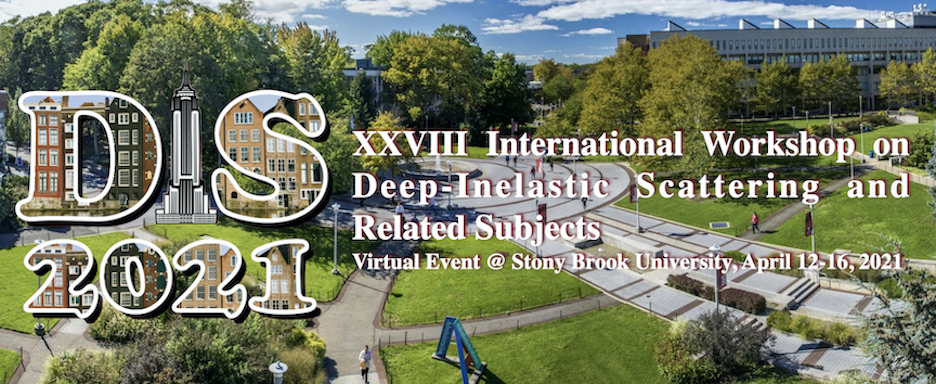Speaker
Description
Heavy quarkonium production provides valuable opportunities for exploring fundamental QCD dynamics with multiple scales. Thus far, NRQCD factorization has been successful in describing many features of the data. Despite many theoretical efforts at NLO accuracy, however, there are still unresolved issues, including the lack of a full understanding of quarkonium polarization at high $p_T$. One significant caveat is that the NRQCD factorization framework in terms of expansion in powers of $\alpha_s$ and the relative velocity of the heavy quark pair does not include the full resummation of powers of $\ln(p_T^2/m_Q^2)$ for high $p_T$ quarkonium production. In previous studies [1,2,3], a QCD factorization formula for high $p_T$ quarkonium production was derived up to next-to-leading power in the $1/p_T$ expansion, by including single parton (twist-2) and double parton (twist-4) fragmentation functions. In this talk, we present the first numerical analysis of the scale evolution of the coupled twist-2 and twist-4 fragmentation functions for quarkonium production, which effectively resums the power of $\ln(p_T^2/m_Q^2)$-type contributions [4]. In particular, we will discuss how to simplify the complicated nonlinear evolution equations [1] and emphasize the importance of input distribution functions [5,6] in $z$ space. We demonstrate how the $p_T$ distribution of unpolarized quarkonium production cross section is modified when taking the quantum evolution into account. We also discuss the impact of the quantum evolution on solving the quarkonium polarization puzzles at high $p_T$.
[1] Z. B. Kang, Y. Q. Ma, J. W. Qiu, and G. Sterman, Phys. Rev. D 90, no. 3, 034006 (2014).
[2] Y. Q. Ma, J. W. Qiu, G. Sterman, and H. Zhang, Phys. Rev. Lett. 113, no. 14, 142002 (2014).
[3] K. Lee and G. Sterman, JHEP 09, 046 (2020).
[4] K. Lee, J. W. Qiu, G. Sterman, and K. Watanabe, in preparation.
[5] Y. Q. Ma, J. W. Qiu, and H. Zhang, Phys. Rev. D 89, no. 9, 094029 (2014).
[6] Y. Q. Ma, J. W. Qiu, and H. Zhang, Phys. Rev. D 89, no. 9, 094030 (2014).

